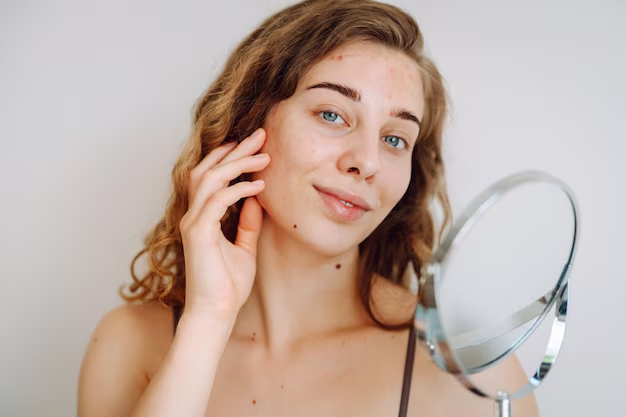What Does Fungal Acne Really Look Like? Unmasking the Skin's Quiet Intruder
Imagine waking up one day and noticing your skin sprouting small, itchy bumps that resemble typical acne but don't respond to your trusted skincare regime. This unsettling revelation can often lead individuals to a battle against a relatively stealthy adversary—fungal acne. Although it masquerades as traditional acne, fungal acne requires a different understanding and approach. Let’s dive into the complexities of fungal acne, discuss its characteristics, and explore various facets that will empower you with useful knowledge and insight.
Understanding Fungal Acne
What is Fungal Acne?
Despite its misleading name, fungal acne isn't acne in the traditional sense. While traditional acne is primarily bacterial, fungal acne, or pityrosporum folliculitis, is a skin condition arising from an overgrowth of yeast within the hair follicles. This overgrowth causes the hair follicles to become inflamed, resulting in the characteristic bumps and itching.
Common Misconceptions
The term “fungal acne” can be a source of confusion, often leading individuals to treat it with standard acne solutions that may exacerbate the condition. Here are some common misconceptions:
- It's just like traditional acne: Fungal acne often necessitates antifungal treatments rather than standard antibacterial acne treatments.
- It will go away on its own: Fungal acne can persist without proper intervention, causing prolonged discomfort.
- All bumps and breakouts are the same: Recognizing the symptoms unique to fungal acne is crucial for effective management.
Recognizing Fungal Acne: Your Diagnostic Guide
Visual Characteristics
So, what does fungal acne actually look like? When examining your skin, here’s what to look for:
- Uniformity in Appearance: Fungal acne often presents as small, uniform bumps. Unlike traditional acne, which can vary in size, these bumps are typically more consistent.
- Location Matters: It predominantly affects areas of increased sweat and oil production, such as the forehead, chest, and upper back.
- Itchiness: One of the hallmark symptoms is a relentless itchiness that accompanies the bumps, setting it apart from non-itchy bacterial acne.
Spotting the Difference: Fungal Acne vs. Acne Vulgaris
Differentiating between fungal acne and acne vulgaris is essential, as they require different treatments. Here's a simple breakdown:
Fungal Acne (Pityrosporum Folliculitis):
- ✧ Appearance: Small, itchy, similar-sized bumps.
- ✧ Areas Affected: Forehead, chest, back.
- ✧ Treatment: Requires antifungal solutions.
Acne Vulgaris:
- ✧ Appearance: Varied sizes; includes blackheads, whiteheads, cysts.
- ✧ Areas Affected: Face, shoulders, back.
- ✧ Treatment: Responds to antibacterial and retinoid treatments.
Triggers and Causes: Uncovering the Root
Internal and External Factors
Understanding the underlying causes of fungal acne is crucial in managing the condition effectively. Here are some common triggers:
- Heat and Humidity: Hot, damp climates provide the perfect breeding ground for yeast growth, potentially triggering fungal acne.
- Sweat and Tight Clothing: Prolonged sweating and wearing tight, non-breathable clothing can increase the risk of developing fungal acne.
- Imbalanced Microflora: Sometimes, the prolonged use of antibiotics can disrupt the natural skin flora balance, encouraging yeast overgrowth.
Lifestyle Factors to Consider
- Dietary Influences: Consuming foods high in sugars and carbohydrates may contribute to yeast growth, potentially impacting fungal acne.
- Stress Levels: High stress can affect the body’s immune system, paving the way for different skin conditions, including fungal acne.
- Hygiene Habits: Infrequent washing of gym clothes or bedding can introduce and perpetuate contact with yeast-causing agents.
Practical Tips for Managing Fungal Acne
Maintaining Skin Health
While a definitive solution involves medical consultation, here are some practical steps to consider incorporating into your lifestyle:
- Opt for Breathable Fabrics: Choose clothing that allows your skin to breathe, especially during exercise.
- Stay Dry: Change out of sweaty clothes promptly and keep your skin dry.
- Balanced Diet: Consider diets lower in carbohydrates and sugars to prevent potential yeast overgrowth.
Products That Might Help
When selecting skincare products, take note of the following:
- Antifungal Ingredients: Look for over-the-counter antifungal treatments that contain ingredients such as ketoconazole or selenium sulfide.
- Avoid Heavy Oils: Heavy, greasy skincare products may exacerbate the condition; opt for non-comedogenic products instead.
Empowering Next Steps
Recognizing and understanding fungal acne is the first step toward developing an effective management strategy. Armed with this knowledge, you can take measures to mitigate its impact, ensuring healthier skin. Remember, identifying the need for professional guidance is crucial when symptoms persist despite adopting lifestyle changes and over-the-counter treatments.
Key Takeaways and Next Steps:
- 🔍 Identify Characteristics: Recognize uniform, itchy bumps primarily on the forehead, chest, and back.
- 🩳 Stay Cool and Dry: Wear breathable clothing and maintain good personal hygiene to reduce yeast growth.
- 🧴 Use Suitable Products: Opt for antifungal creams and avoid heavy oils in skincare.
- 🌿 Examine Lifestyle Choices: Reduce sugar and carbohydrate intake for better skin balance.
- ⏰ Monitor Persistence: If the condition doesn't improve, seek professional advice to tailor a suitable treatment plan.
By understanding and recognizing the uniqueness of fungal acne, individuals can make informed decisions about skin care while maintaining a watchful eye on their skin's health and overall well-being.
